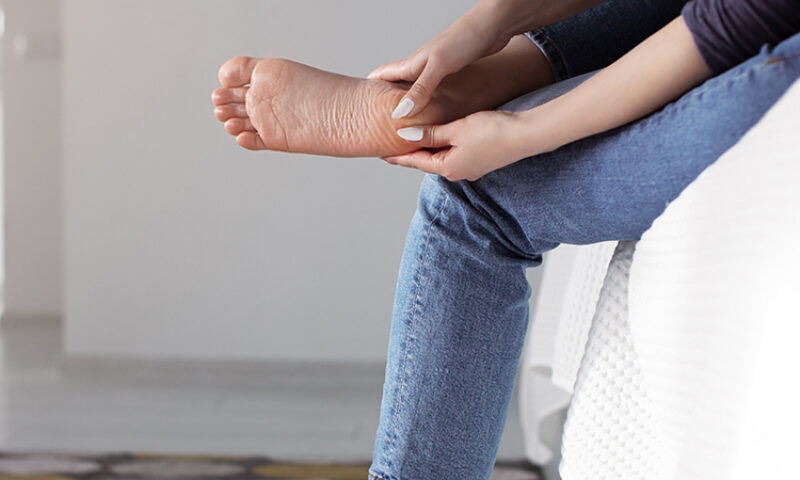
Flat Feet
Also known as flatfoot, flat feet occur when an individual has little to no arch in one or both of their feet. Learn signs, symptoms and treatment options.
What Are Flat Feet?
Also known as flatfoot, flat feet occur when an individual has little to no arch in one or both of their feet. Babies are naturally born with flat feet and by age six, arches will fully form. Occasionally, an arch is not developed or eventually falls causing flat feet. There are four main types of flat feet: flexible, rigid, fallen arch, and vertical talus.
Flexible flat feet: the most common type where the arch is present but disappears when the foot bears weight. It often develops during childhood or adolescence and can get worse with age.
Rigid flat feet: the arch isn’t present when standing or sitting. The individual may have difficulties flexing or moving the foot from side to side.
Fallen arch: also known as adult-acquired flat foot, this type occurs when the arch drops or collapses due to a tear in the tendon that supports the arch.
Vertical talus: this type occurs as a birth defect, meaning the arch is prevented from forming due to the talus bone in the ankle being in the wrong position. It is also known as rocker-bottom foot due to the foot resembling the bottom of a rocking chair.
Symptoms of Flat Feet
Vertical talus is Flat feet often unnoticed until an individual experiences painful symptoms. This can include leg and foot cramps, muscle pain, pain in the arch, heel, or outside food, and pain when walking. The severity of the pain will vary and is sometimes exasperated by additional lifestyle factors.

What Causes Flat Feet?
The causes of flat feet vary and include genetic and lifestyle factors. For some the arch never develops during childhood while others experience flat feet later in life. Common causes include:
How Flat Feet Are Diagnosed
A podiatrist will observe the foot and may recommend X-rays to understand the bone structure. They will gather background information and observe how the individual walks and stands. Based on the observations a provider will be able to flat foot diagnosis or another feet-related condition.

Your Podiatry Providers
Schneck's specialized providers deliver outstanding podiatry care so you can keep moving.

Evan Aldridge, DPM
Podiatry View Info »
Wendy Goldstein, DPM
Podiatry View Info »
Jason B. Woods, DPM, CWSP
Podiatry View Info »Flat Foot Treatment
It’s possible to live with flat feet without any intervention. Treatment typically only happens if the individual is experiencing pain or limited mobility. Pain can be managed with nonsteroidal anti-inflammatory drugs along with icing and rest. Physical therapy may also help to stretch the tendons and strengthen muscles. Additionally, podiatrists may recommend devices like orthotics and braces along with wearing shoes that support the arch.
Get Back On Your Feet With Schneck
If flat feet are getting you down, reach out to the team at Schneck. Our podiatrists can work with you to understand why you might be experiencing pain and help you return to a more active lifestyle.
